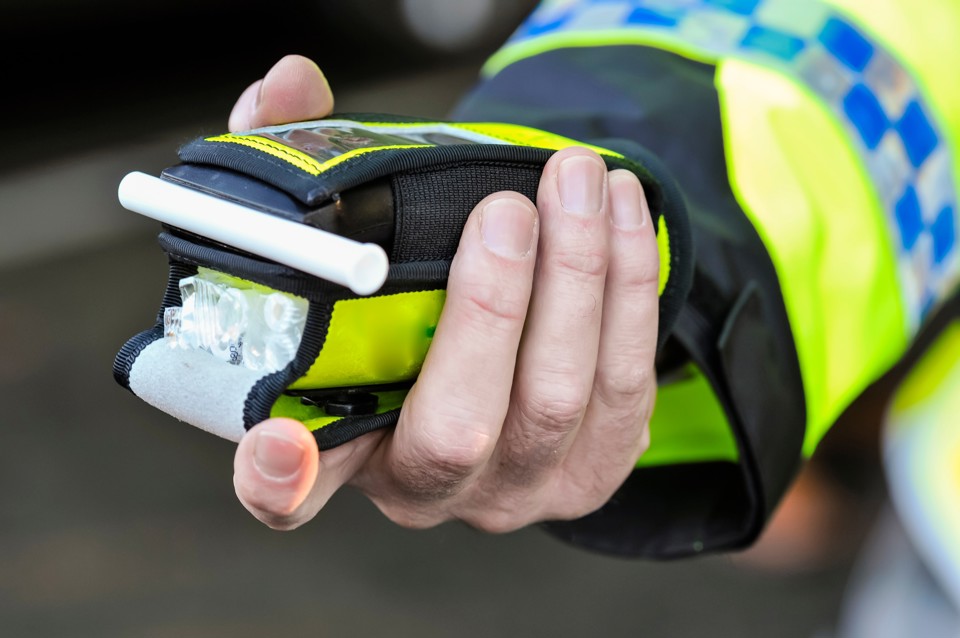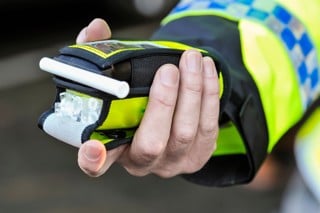Between 210 and 250 people were killed in accidents in Great Britain where at least one driver was over the drink-drive limit in 2019, figures from the Department for Transport (DfT) suggest.
The number of fatalities was broadly in line with figures for 2018.
An estimated 7,800 people were killed or injured when at least one driver was over the drink-drive limit. This represents a fall of 10% from 8,680 in 2018 and is the lowest figure recorded.
The total number of accidents where at least one driver was over the alcohol limit decreased by 9% to 5,350 in 2019, the lowest number of drink-drive accidents recorded.
In 2019, the number of killed or seriously injured (KSI) casualties in drink-drive accidents rose while all casualties fell.
This, says DfT, was because the number of seriously injured casualties in accidents in which at least one driver or rider failed a breath test rose, while the number of slightly injured in these accidents fell compared to 2018.
RAC head of policy Nicholas Lyes said: “While there will be much interest in the 2020 casualty figures when they come out to understand the impact of the Covid lockdowns on drink-driving, these figures still represent a rather chilling reminder that in the region of 250 people are killed by drink-drivers on Great Britain’s roads every year, a figure that’s barely fallen since 2010.
“Clearly, much more needs to do done, and one area we’d like to see progress in is around cutting reoffending.
“A report by PACTS found that nearly one-in-five drink drive offences are carried out by repeat offenders, something that could be tackled with the introduction of alcohol interlocks.”
The prevalence of drink-driving in road deaths has fallen over time. In 1979, 26% of road deaths occurred in accidents where at least one driver or rider was over the drink-drive limit. This had fallen to 15% by 1989.
Since then, the percentage of road deaths that are drink-drive related has varied between 12% and 18%. In 2019, the rate was 13%.
The proportion of killed or seriously injured (KSI adjusted) casualties in drink-drive accidents has varied between 5% and 7% since 2005. In 2019, the rate was 6%.
The central estimate of the number of drink-drive casualties of all severities in 2019 is 7,800, a fall of 10% from 8,680 compared to 2018. This is the lowest level recorded.
It is estimated that around 5% of all casualties in reported road accidents in 2019 were involved in accidents in which at least one driver or rider was over the drink-drive limit.
In 1979, 9% of road casualties occurred in accidents in which at least one driver or rider was over the drink-drive limit. This has fallen to 5% by 1992 and has mainly varied around 5% since then.
Hunter Abbott, managing director of personal breathalyser firm AlcoSense, said: “The fact that testing is at its lowest level on record should be ringing alarm bells. Police carried out just 285,380 roadside breath tests in England and Wales in 2019 – less than half the number in 2008.
“All convicted drink drivers in Northern Ireland are now automatically referred to a rehabilitation course – to educate them on the potential consequences of their actions. This should be introduced in the rest of the UK as soon as possible."
In a poll conducted by AlcoSense, more than a third of motorists (36%) think their ability to drive is only impaired if they are actually over the legal drink drive limit. But, according to AlcoSense you are 13 times more likely to be involved in a fatal crash if you are at, but not over, the limit in England, Wales and Northern Ireland.
Even with 10mg per 100mL of alcohol in your blood (one eighth of the limit) it is 37% more likely than when completely sober, research shows, it says.
Drink-drive casualties by country and English region
The percentage of all casualties which occurred in drink-drive accidents was the highest in Wales at 6.9% followed by England at 5.1% and Scotland at 4.6%.
Within the English regions, the casualty rates varied from 7.0% in the East Midlands to Greater London at 2.9%.
Since 2010, the proportion of casualties that occur in drink-drive accidents has been higher in Wales than in England or Scotland.
Casualties in drink-drive accidents by sex
In 2019, 78% of drink-drive accidents involved male drivers or riders over the legal alcohol limit.
Some accidents will involve both male and female drivers over the limit, and sex is unknown for some drivers.
However, males make up 69% of drivers (excluding pedal cyclists and horse riders) involved in all accidents where the sex of the driver is known.
In 2019, 67% of casualties in drink-drive accidents were male compared to 60% in all reported road accidents.
Casualties in drink-drive accidents by age
A higher proportion of casualties in drink-drive accidents were aged between 25 and 59 than in all reported accidents in 2019 (63% in drink-drive accidents compared to 56% in all accidents).
The same was true for people aged 16 to 24 (23% in drink-drive accidents compared to 19% in all accidents).
Older people (aged 60+) represented a lower proportion in drink-accidents than accidents overall (8% in drink-drive accidents compared to 14% in all accidents).























Login to comment
Comments
No comments have been made yet.